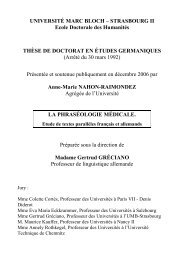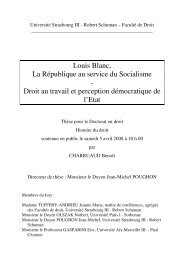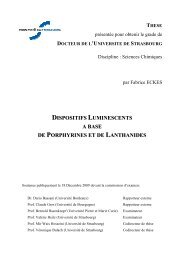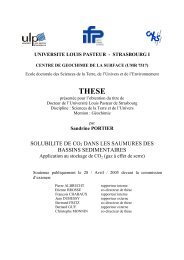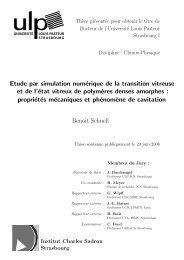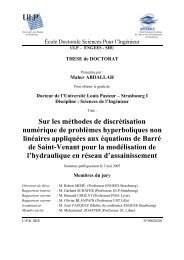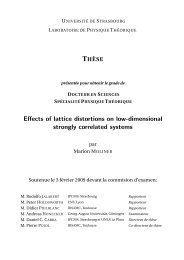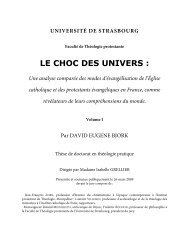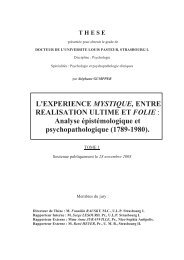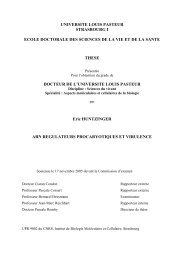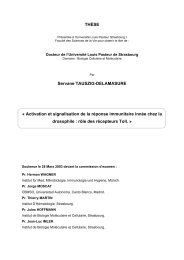Anthony KERMAGORET - THESES ET MEMOIRES DE L'UDS
Anthony KERMAGORET - THESES ET MEMOIRES DE L'UDS
Anthony KERMAGORET - THESES ET MEMOIRES DE L'UDS
Create successful ePaper yourself
Turn your PDF publications into a flip-book with our unique Google optimized e-Paper software.
Chapitre III<br />
distorted octahedral coordination geometry defined by a chelating PNth ligand and four chlorine<br />
atoms. Cl1 is terminally bonded to Ni1 but Ni1 and Ni2 are symmetrically bridged by Cl3 and Cl4<br />
while Cl2 asymmetrically caps three metal centres. The Ni1⋅⋅⋅Ni2 distance of 3.0951(5) Å indicates<br />
the absence of strong metal-metal interactions.<br />
The Ni4Cl8 core of 1a is unprecedented since no complex with a M4X8 (X = halogen)<br />
stoichiometry appears to have been reported for group 10 metals. Furthermore, the geometry of this<br />
Ni4Cl8 core is new for any combination of transition metals with halogens. It is also noteworthy that<br />
1a represents the first complex in which a phosphine is coordinated to a NiCl4 moiety. Only one<br />
example of a phosphine bound to a NiX4 fragment (X = halogen) has been reported in the literature<br />
(X = Br). [5]<br />
A green complex analogous to 1a, [NiCl2(PNox)]4 (2a), was obtained under similar conditions<br />
with the ligand PNox instead of PNth and identified by X-ray powder diffraction (See Supporting<br />
Information). Complexes 1a and 2a undergo a pressure-induced structural modification, their color<br />
changing from green to deep red (25-35 kbar) (Scheme 1). Their high pressure forms and the red<br />
powders obtained by slow solvent evaporation were identified as the mononuclear complexes<br />
[NiCl2(PNth)] (1b) and [NiCl2(PNox)] (2b), respectively, by comparison of their FTIR spectra with<br />
those of the corresponding bromides (Figures 2 and S-2, see Supporting Information).<br />
Figure 2. ORTEP views of the molecular structures of 3 and 4 with partial labeling scheme.<br />
Ellipsoids enclose 50% of the electron density. Hydrogen atoms are omitted for clarity. Selected bond<br />
distances (Å) and angles (°) for 3: Ni1-P1 2.147(1), Ni1-N1 1.910(3), Ni1-Br1 2.3095(6), Ni1-Br2<br />
2.3665(6); N1-Ni1-P1 84.4(1), P1-Ni1-Br1 87.75(3), N1-Ni1-Br2 95.1(1), Br1-Ni1-Br2 92.72(2). For<br />
4: Ni1-P1 2.158(1), Ni1-N1 1.905(3), Ni1-Br1 2.2983(7), Ni-Br2 2.3602(7), N1-Ni1-P1 85.0(1), P1-<br />
Ni1-Br1 87.73(4), N1-Ni1-Br2 94.0(1), Br1-Ni1-Br2 93.37(3).<br />
5



